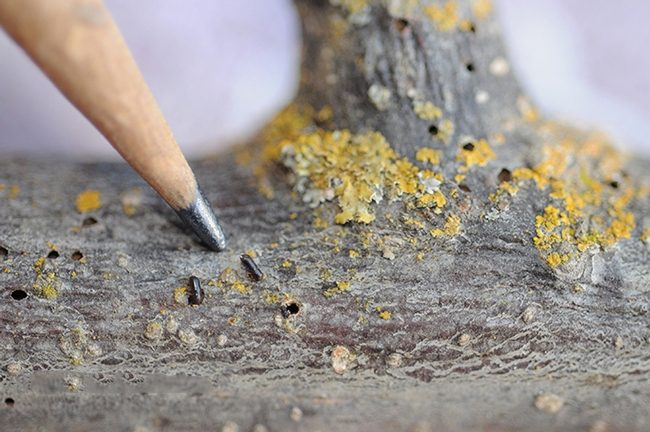
The walnut twig beetle and the thousand cankers disease it vectors don’t appear to be the devastating pests of English walnuts they were thought when first found in commercial orchards. But the pest complex should still garner respect from producers because of its potential to reduce production and kill trees under the worst case.
“It seems it hasn’t been that big a deal for most growers,” said Rick Bostock, a distinguished professor emeritus in the UC Davis Department of Plant Pathology. “But growers have been affected by it, there’s no question.”
Since the pest complex was first found affecting commercial English walnuts in 2009 in California, researchers have slowly unraveled some of the questions surrounding it, such as seasonal beetle activity and relationship to tree stress. But many other questions remain unanswered.
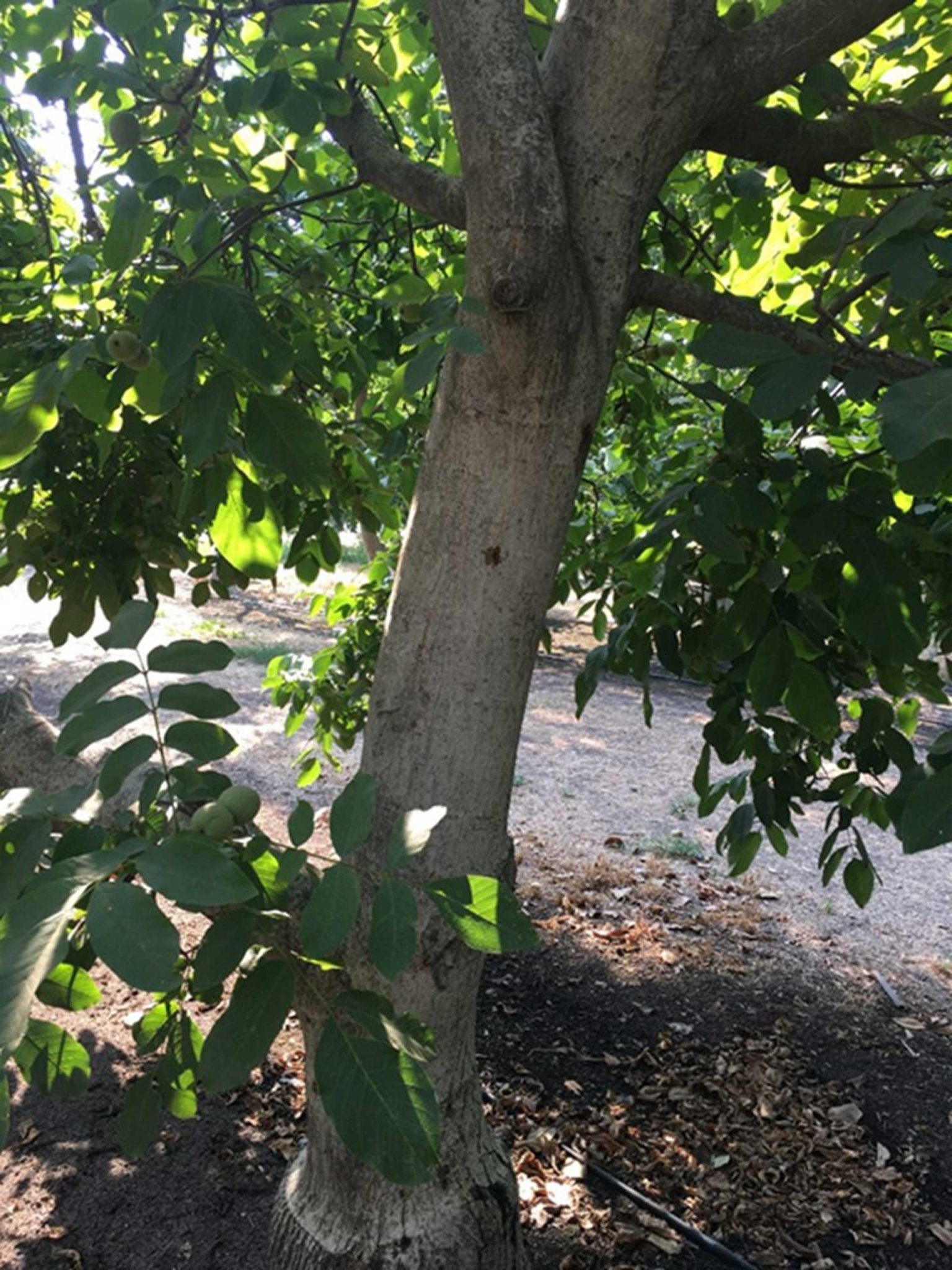
Correlation with Crown Gall
One of the more recent research findings has been a correlation between trees infected with crown gall caused by Agrobacterium tumefacians and the incidence of thousand cankers disease (TCD), Bostock said. But he was quick to point out that their studies do not confirm cause and effect but merely show a strong association between the two.
“Anecdotally, we had found that crown gall seemed to be associated with TCD,” he said. “Based on survey work we did this past year, the numbers look very strong.
“It’s very likely that crown gall got there first, and then the beetles have come in and in some way were attracted to these trees. So, we think it’s a risk factor, and there may be other factors that we hope to be looking at.”
The UC Davis studies on TCD are funded by a grant from the USDA’s Western Sustainable Agriculture Research and Education program administered by Montana State University.
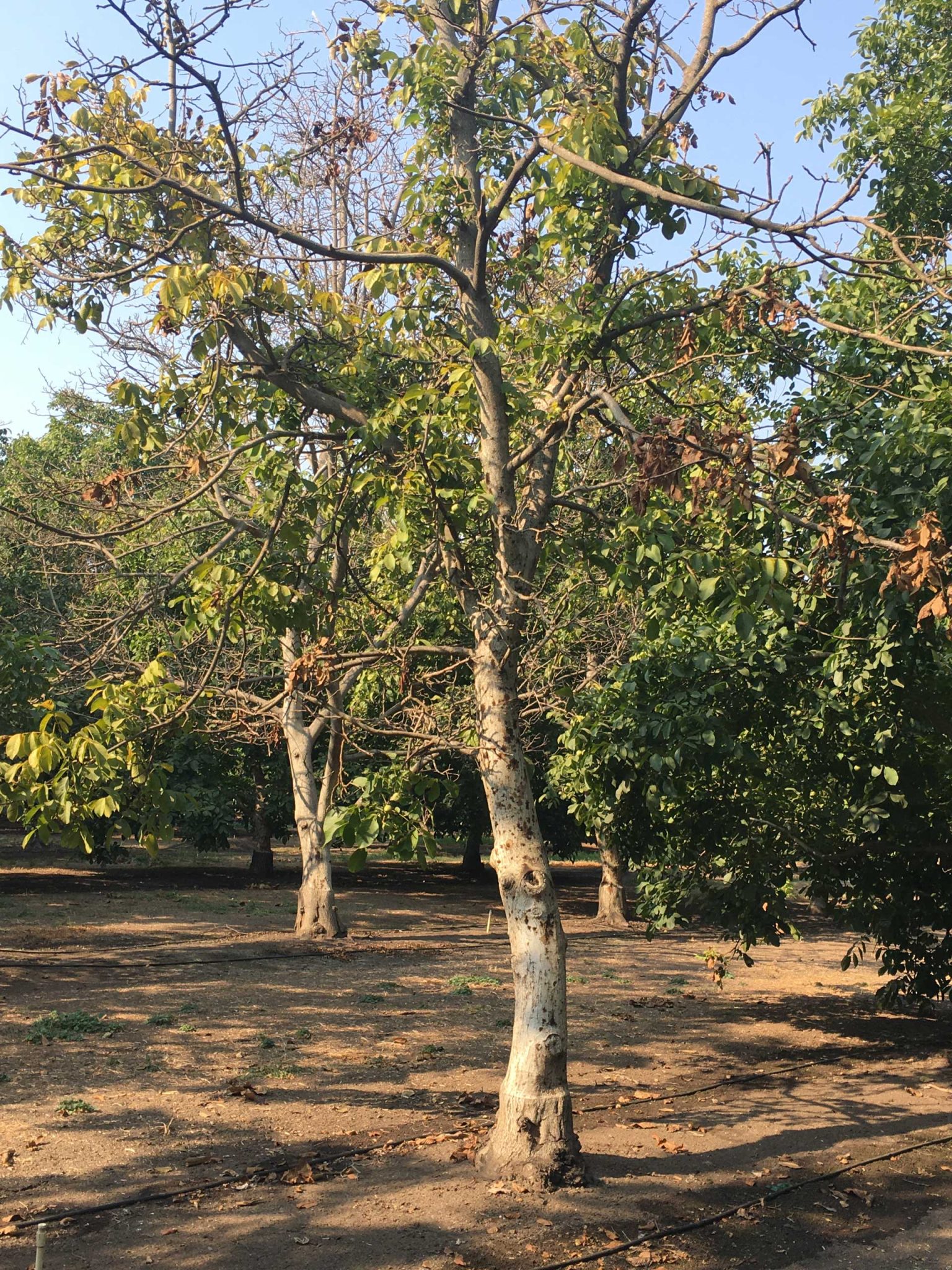
Searching for Beetle Management
Because walnut twig beetles (WTB) spend most of their lives protected under tree bark, insecticides aren’t a viable management tool, Bostock said. Fungicides to kill the pathogen vectored by WTB also are ineffective. That’s why researchers have focused on finding alternative controls for the TCD complex.
As part of earlier work, Bostock and Steven Seybold, a chemical ecologist and entomologist with the USDA Forest Service’s Pacific Southwest Research Station in Davis, looked at potential host plant resistance against the TCD fungus and WTB.
Although Juglans macrocarpa, one of the parents of an advanced selection of experimental hybrid rootstocks, appeared less attractive to WTB, it was more susceptible to the TCD fungus.
Research assistant Megan Siefker and postdoctoral associate Corwin Parker, both in Bostock’s lab, have continued trials into potential WTB repellents initiated by Seybold and former UC Davis entomology graduate student Jackson Audley. Seybold passed away in 2019.
The most promising is a cocktail comprising limonene, a naturally occurring compound in citrus and other plants, and trans-conophthorin, a component of the pheromones of many bark beetle species.
In trials conducted in 2021, the repellent appeared to significantly reduce the number of WTB attracted to trees. But its scope of influence was only about two meters (about six feet), and its efficacy only lasted four to five weeks in the orchard, Bostock and Siefker said.
Should the product eventually be commercialized, Bostock said it may be something growers consider applying to only their most at-risk trees, such as those with crown gall, and during periods of high beetle flight activity. It is currently not registered for use.
“Trying to apply this material on every tree would be cost prohibitive, but you might get some benefit from targeting trees that are stressed but are still productive,” he said.
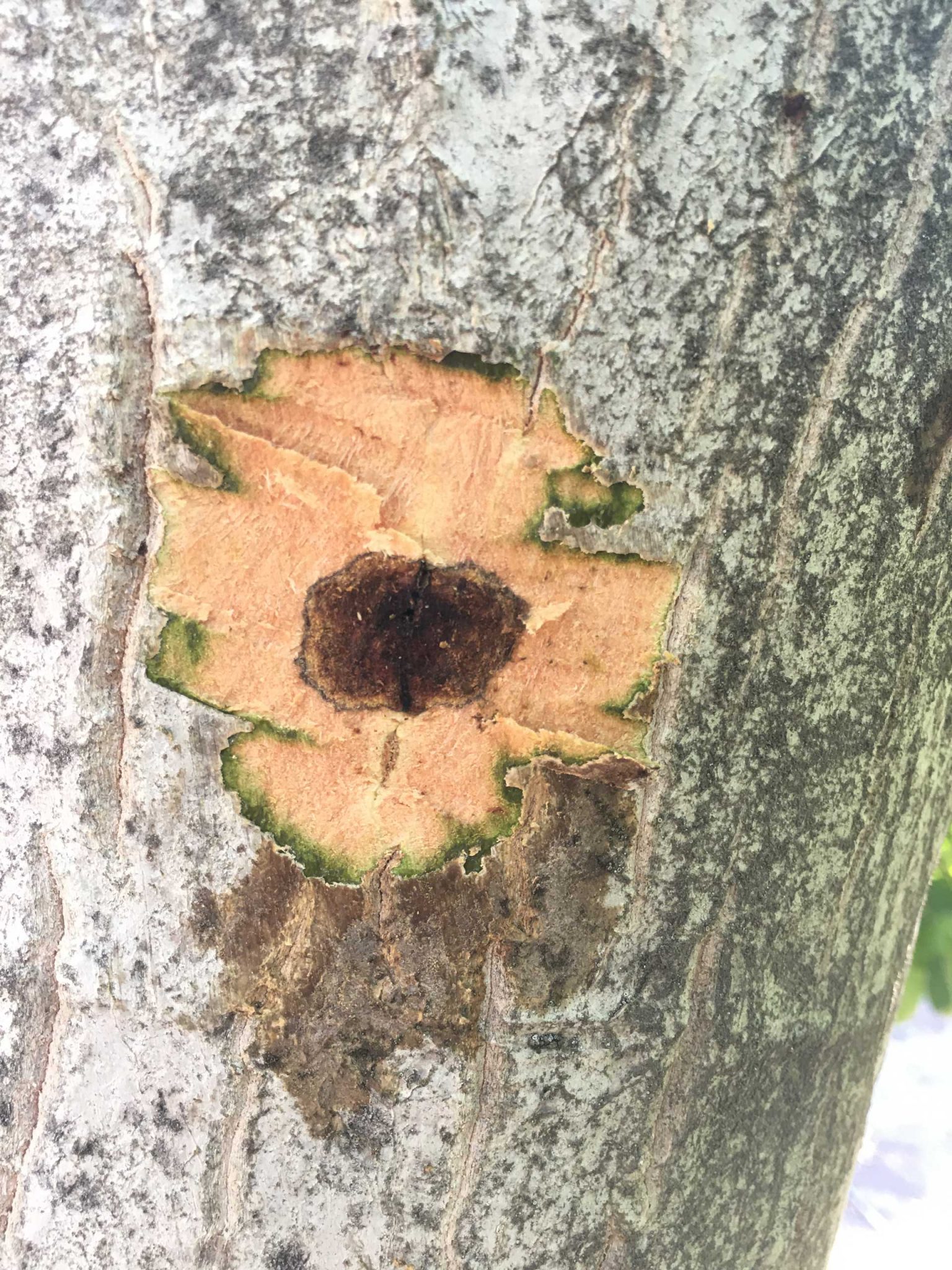
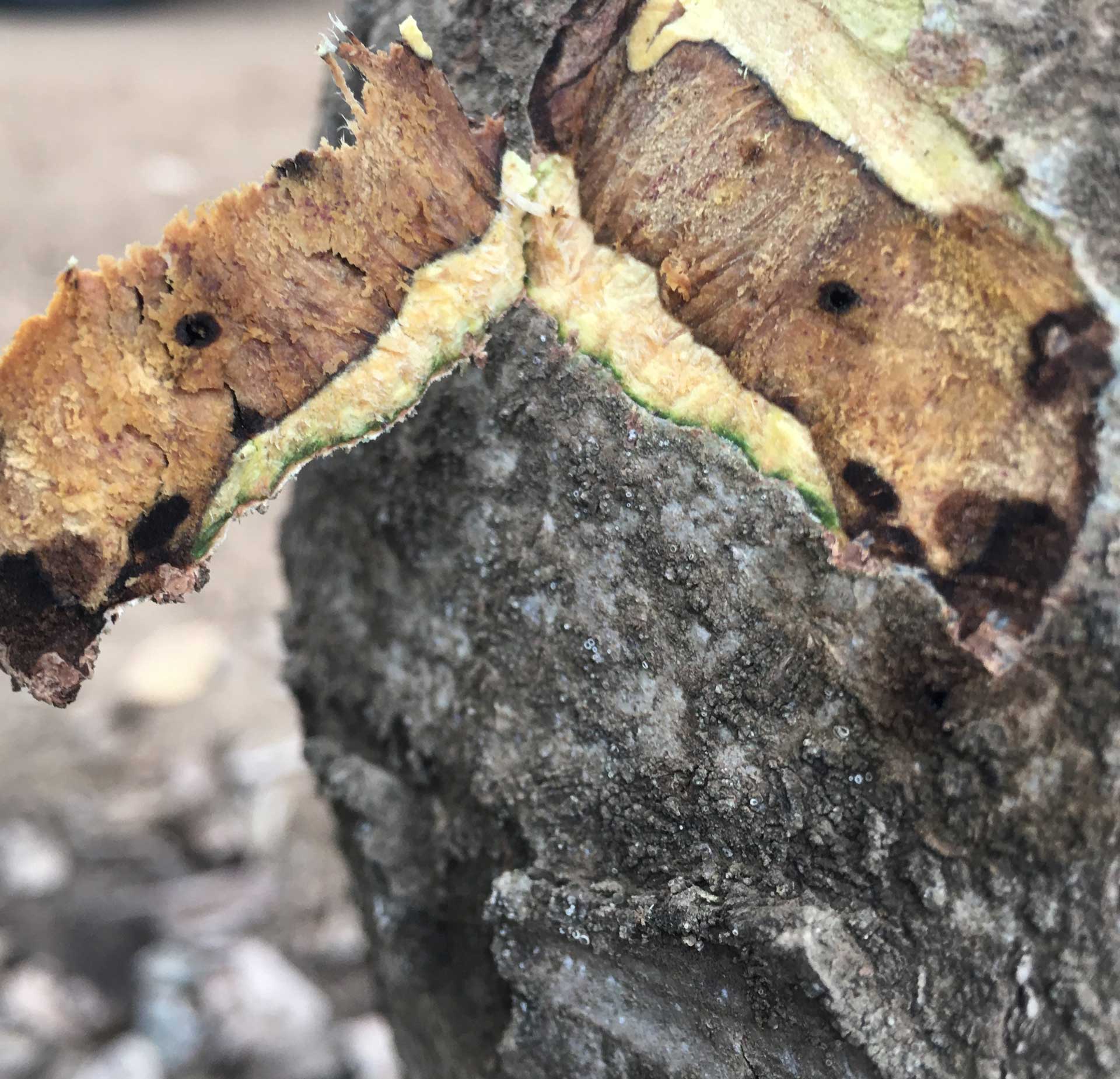
Scout to Catch TCD Early
Surveys conducted by UC researchers and Cooperative Extension in 2012 and 2013 found isolated TCD infestations in English walnuts throughout the state.
Mohamed Nouri, a UCCE orchard systems advisor in San Joaquin County, said he made about four to five farm calls in 2020 and about the same in 2021 to look at suspected TCD issues. He said his colleague in Stanislaus County, Area Integrated Pest Management Advisor Jhalendra Rijal, received similar inquiries from walnut growers and PCAs.
The TCD complex has caught the attention of Eric Heinrich, who farms with his brothers and father near Modesto. They recently removed an old Hartley block riddled with it.
“I’ve seen the effects of it; there was a lot of dead wood,” Heinrich said. The orchard also was severely infested with crown gall.
Aaron Heinrich, an independent PCA, scouts walnuts in Stanislaus and San Joaquin counties. Although he is aware of the disease complex, he said he hasn’t found it.
“We’re monitoring trees from top to bottom, even up in pruning towers,” he said. “My clients and I are really particular, so we’re just on it. It’s on our radar, and we’re scouting for it. We haven’t had to deal with it yet.”
Scouting and early detection are key to management, Nouri said. Among the more visible symptoms are darkish stains on the outer bark surface, especially in mid-summer, caused by underlying cankers. But he said other diseases, such as shallow bark canker, can cause similar bark staining.
To further identify, look for minute adult beetle entry and exit holes, typically the diameter of a mechanical pencil lead, in the bark within the stained area. Another way is to take a pocketknife and remove the surface bark, revealing beetle galleries made in the phloem tissue.
“Since both organisms, fungus and twig beetle, are more likely to be found together, the identification of either can be used in diagnosing a thousand cankers disease,” Nouri said.
In most of the orchards he visited, Nouri said the TCD complex was scattered among the trees. But in an older walnut orchard near Linden, the problem was widespread. In fact, he even found a few symptoms in a neighboring healthy 15-year-old orchard.
Based on literature reports, Nouri said beetles prefer orchards that are stressed, are older or on the decline. The neighboring orchard fit none of those. When he returned the following year, he couldn’t find any evidence of WTB in the neighboring orchard.
This appears to back up previous research, which found trees can recover from the TCD complex if the infection is not widespread and the trees are kept healthy and free from stress, Nouri said.
“If you keep those trees happy and healthy, they will recover,” he said.

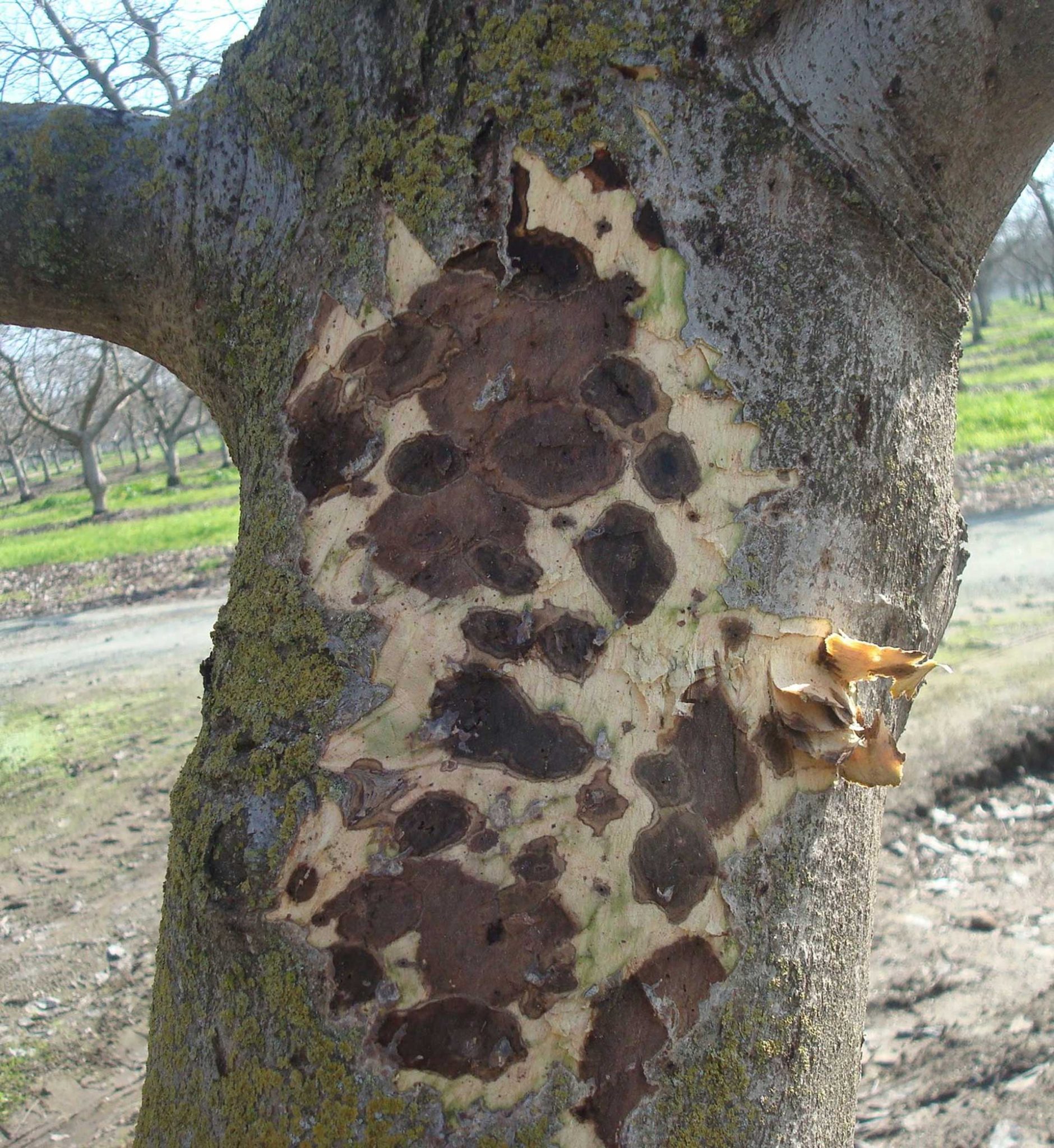
A Complex Relationship
Native walnut tree species in the West were first seen declining in the late 1990s. But it wasn’t until 2008 that tree mortality was tied to feeding by WTB, known scientifically as Pityophthorus juglandis, and to a new fungus that caused cankers to form around the beetle galleries. The fungus, Geosmithia morbida, was subsequently identified as the causal agent of what was named thousand cankers disease.
Native to the Southwest and northern Mexico, WTB are about 1/16-inch long, smaller than a grain of rice. The insects, which belong to the bark beetle family, have expanded their range and are now found throughout California, the Pacific Northwest and the Rockies. They also have established populations in states east of the Mississippi, and TCD is now found in walnut orchards in Italy.
Bostock said scientists do not know how far back the association between WTB and G. morbida goes, but TCD does not appear to cause significant damage to Juglans major, the dominant walnut species in the beetle’s native range in Arizona and New Mexico.
Despite the walnut twig beetle’s name, Bostock said it prefers branches of at least 0.5- to 0.75-inch diameter and attacks scaffolds, trunks and rootstocks.
Males burrow into the bark to begin horizontal galleries in the underlying phloem. As they do, they emit a pheromone that attracts females and can cause mass beetle attacks. After mating, females lay eggs in the galleries. Both male and female WTB inoculate the tunnels with TCD spores they carry on their body. At times, trees will bleed around beetle holes.
Gallery construction and subsequent larval feeding and fungal colonization damage the phloem, plant tissue that transports carbohydrates and other important chemicals. This causes cankers that increase in size and coalesce, girdling branches and causing tree decline and mortality under severe infections and beetle colonization.
Affected walnut trees initially have yellowing leaves and thinning foliage in the upper crown, followed by large branch die back and tree collapse.
In English walnut orchards, Cooperative Extension encourages growers to closely monitor newly and mildly infected trees. Should the trees be severely infected or showing severe decline, growers may want to remove and burn or chip the trees.
What growers should not do is move wood from infected trees off orchard property. Researchers believe transport of infected wood is how the TCD complex spread to the East.
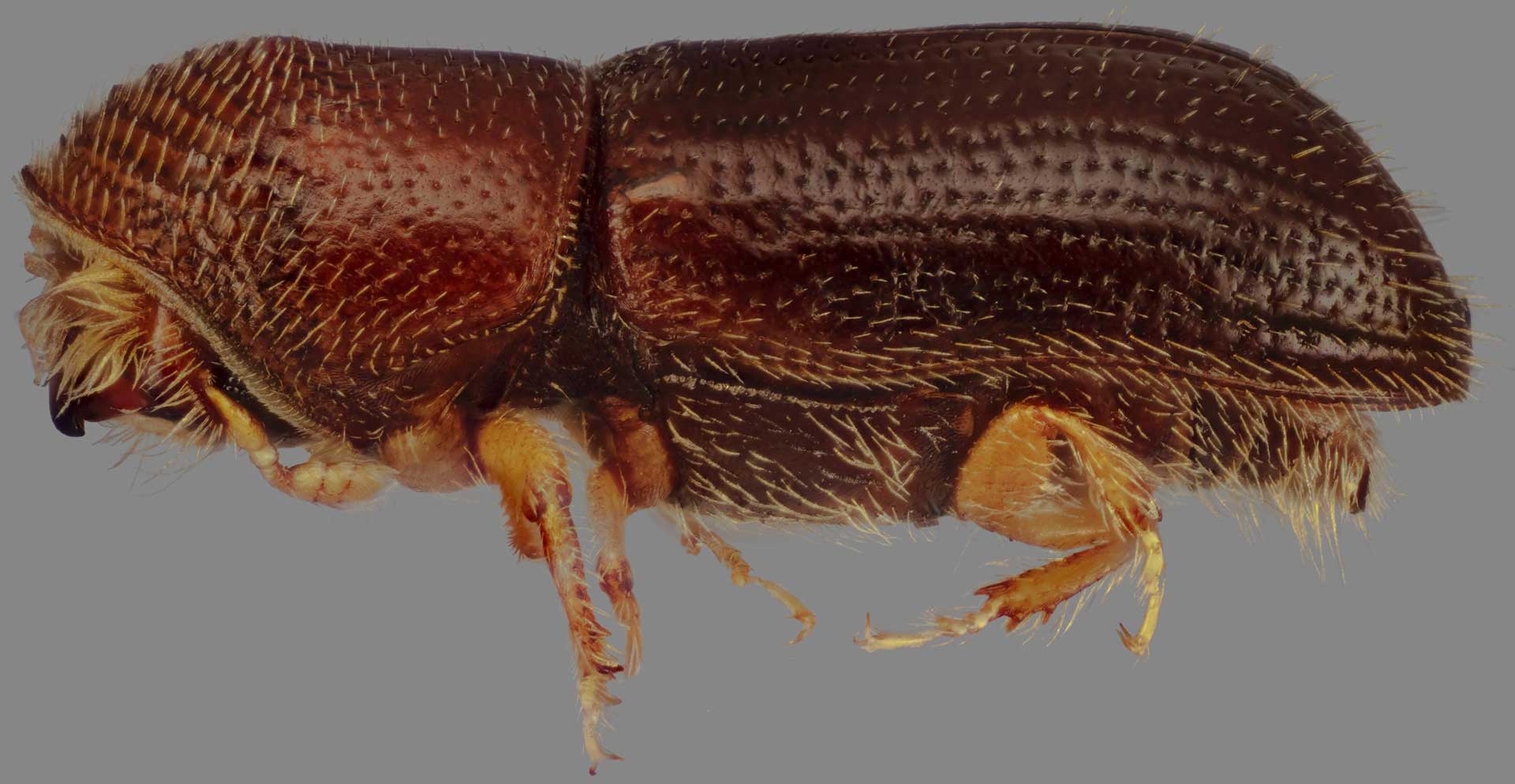
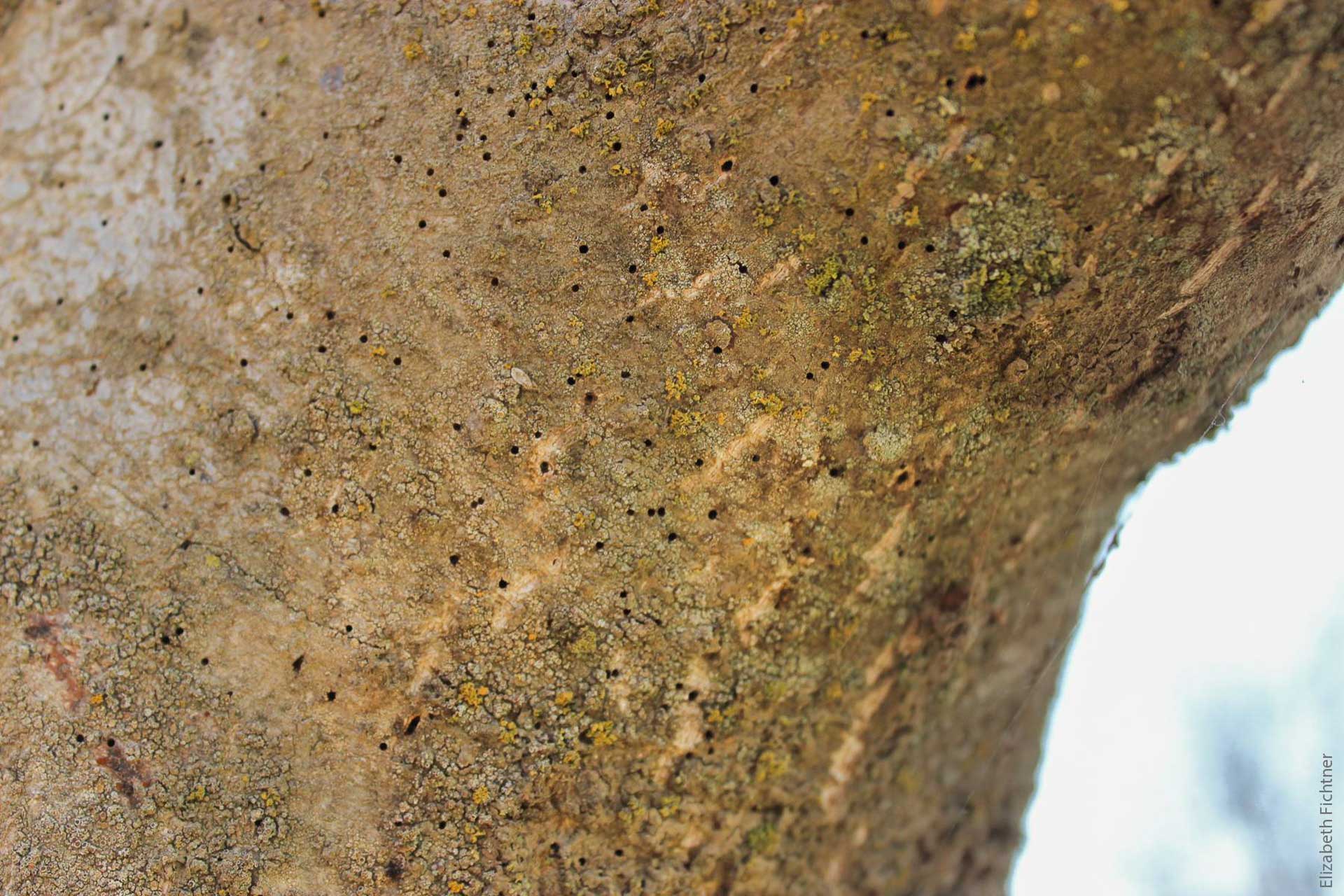
Walnut Species Susceptibility
Two native black walnut species, Southern California black walnut (Juglans californica) and Northern California black walnut (Juglans hindsii), are very susceptible to the TCD complex. The dead walnut trees lining Russell Boulevard in Davis as well as many other rural roads are testament to that.
In addition to providing ornamental shade and wildlife food and habitat, J. hindsii is a parent of the hybrid Paradox rootstock.
J. nigra, the Eastern black walnut, also is very susceptible. Although it is native to the East, it is grown in the West as a shade tree.
English walnuts, Juglans regia, are less susceptible. Because many orchards are grafted onto black walnut or Paradox hybrid rootstocks, they are more vulnerable to TCD.










